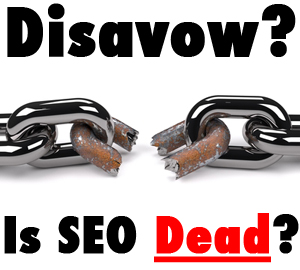 Welcome to my monthly post about what’s happened in my business, and the SEO world in general, in October.
Welcome to my monthly post about what’s happened in my business, and the SEO world in general, in October.
This month there’s lots to discuss…but do yourself a favor, spend 3 minutes to read this post. It’s important that you don’t miss out on the latest twists and turns of SEO and don’t let you website become a casualty…
- Countless “gurus” are screaming that SEO is dead.
- Google released their new “Disavow” tool (October 16th).
- Google released Penguin 3 (October 5th).
NOTE: I wrote a special post specifically discussing the recent Google algorithm changes on October 8th – click here to check it out.
There’s no doubt about it, SEO is changing…it’s changing quickly.
Today I’ll be focusing mainly on the disavow tool and giving you my point of view about when I’d use it, and when I stay away from it.
I’ll also give my thoughts about the state of SEO, and finally, share a secret little project I’m working on…
What’s the “disavow” tool?
Should you be using it?
Can other people use it to hurt your websites?
And…is this going to KILL SEO for good…or is SEO already dead?
Let’s find out…
What Is The New Google “Disavow” Tool?
Firstly, here’s the definition for “disavow”:
Disavow basically means to deny knowledge, deny association or deny ownership of something. In the case of Google and your links, to deny that you made the links or that you want Google to take them into consideration when ranking your website.
What the disavow tool allows you to do is to give Google a list of links you want them to ignore (links you don’t want taken into account)…but like most things Google do, it’s not this simple as I’ll now explain…
Do You Need To Use It?
Probably not.
The only time I’d consider using the disavow tool is if I had absolutely NOTHING to lose from using it and something to GAIN (financially) from using it.
Let’s look at an example…
Let’s say I own a website that used to have top 10 rankings, used to receive hundreds of visitors per day from Google, and used to earn me $500 or more each month. Then all of a sudden, perhaps after a Penguin update, my site lost its rankings and lost its earnings.
After analyzing my links and identifying the bad ones and trying to remove them, I might then use the disavow tool (to disavow links I couldn’t get removed).
But this is probably the only time I’d use the tool…
I definitely wouldn’t use it to try to “resuscitate” a website that had top rankings but didn’t earn me much money…what would be the point in that?
So as a general rule, if you’ve lost rankings on a site that was previously earning you some decent income, then perhaps it’s worth considering.
If you’ve lost rankings on a site that wasn’t making you money in the first place, then don’t waste your time using it.
What If OTHER People Disavow Pages Where YOU Have Links?
What If Someone Disavows YOUR Website?
Matt Cutts from Google has said that disavow tool “typically will not hurt you”…
The problem is however, if lots of different people were to disavow webpages that you’ve got links on (or your own website), then it’d surely be used as a signal to trigger some kind of penalty or loss in rankings, or perhaps to queue your website for a manual review.
The disavow tool hasn’t been released long enough to really know if it can cause damage, but based on the repeated warnings Google gives about using it, we can only assume that YES, it could hurt you if someone disavows your websites or the places you’ve got links.
But there’s a way around this…create better quality links (it’s not that hard) and control where your links come from…more on this shortly…
Let’s now take a look at some specific cases when you might want to use the disavow tool…
When You Might Want To Use The Disavow Tool…
Before using the disavow tool, Google has stated that they want to see that you’ve made an effort to remove spammy links manually (contacting website owners and asking them to remove links to your site).
Once you’ve done this, then, and only then, does Google recommend you actually use this new tool.
Note: This could just be Google trash talk…preaching about their ideals, it’s still too early to tell.
Here are a few examples of when the disavow tool could come in handy:
1. When You’ve Been Hit By Penguin
If you’ve been hit by Penguin, it normally means you’ve got too many bad links, or you’ve used the same anchor text too often.
If this is the case, and it’s impossible to remove the links manually, then the disavow tool may be your last option.
2. When You’re The Victim Of “Negative SEO”
Definition: Negative SEO is the practice of building a heap of links on undesirable websites (spammy sites, porn sites, deindexed sites etc) in an attempt to cause DAMAGE to competitors.
If one of your competitors has resorted to evil tactics to push your website down the rankings (negative SEO), then the disavow tool could be an option.
Just like anytime you use the Disavow tool, first you need to be as certain as possible that the links are actually doing you harm…Once you’re pretty sure of this, and assuming you can’t remove the links manually, then the disavow tool could be your next best option.
3. If You’ve Received A Manual Penalty
If you’re sure that you’ve received a manual penalty, then the disavow tool could be an option.
The main issue here is that it’s very very hard to know for sure if you’ve actually received a manual penalty.
4. If You’ve Received A Bad Links Warning
Here’s what a bad links warning looks like (they are delivered to Google Webmaster accounts):
If you’ve received one of these messages, tried everything to remove the “bad links” and still can’t get rid of them, the next step could be to use the disavow tool.
CAUTION:
The problem with disavowing links is that it’s often hard to know exactly which links should be disavowed…
Which are the links that Google considers spam and which are the links that Google likes?
In some cases it might be obvious which are spammy links and which aren’t, but there are plenty of cases when you just might not know for sure whether a link is “good” or “bad”, and disavowing a good link will obviously hurt your rankings.
By now you’ve got a good understanding of the main considerations, if you want to move forward and use this tool, here’s how (again, only use it if you’ve lost something worth fighting for…):
How To Use The Disavow Tool:
Before you do anything, you need to identify all of the links to your website, and in particular, the bad links.
The easiest way to do this is to look at the “Links To Your Site” inside the Traffic menu in Google Webmaster Tools.
If you haven’t set up Google Webmaster tools for your website, you can analyze your website links using the Open Site Explorer (OpenSiteExplorer.org) or Majestic SEO (MajesticSEO.com).
Once you’ve got a list of all the links to your website, analyze it and pick out the spammy ones (this is where it gets really tough…it’s hard to know exactly what Google considers a bad link which is what makes the disavow tool so hard to use…).
The “spam links” list that you create is ultimately a list of the links you’d disavow.
NOTE: In order to use the Disavow tool you WILL need to have a Webmaster Tools account and you will need to add your website to it…so if you’ve got a site which is in trouble and intend on using the Disavow tool to try to fix it, you’ll need to add it to Google Webmaster Tools first.
So now that you’ve got your list of spammy links that you want to disavow, here’s how to use the tool:
1. Login to your Google Webmasters account and add (and verify) the website that you want to use the disavow tool for.
2. Next (while still logged into your Google Webmaster Tools account), go to https://www.google.com/webmasters/tools/disavow-links-main?pli=1 and select the website you want to disavow links to from the dropdown menu (and then click the “Disavow Links” button).
3. Next you’ll be presented with a message telling you that you need to be careful using the tool and that it can in fact damage your website. Read the statement and then click the “Disavow Links” button again.
4. Next you’ll need to prepare a text file telling Google the links you want to disavow. Here’s an example of what the .txt file should look like:
As you can see in the file above, there are 3 different parts to the disavow file:
Part 1: The “#” symbol which can be followed by an explanation saying what you’ve tried to do to get the links removed manually.
Part 2: The “domain:” command which allows you to disavow all links from an entire domain.
Part 3: Specific URL’s which will disavow links on specific pages.
Once you’ve prepared the .txt file as shown above, you can select it (using the “Choose File” button shown below) and then upload it by clicking the “Submit” button.
So, as you can see, the process is pretty straightforward, nothing overly complicated about it.
Now the big question everyone’s talking about…
Is SEO Dead (or dying)…?
No.
It’s changing.
Some people are telling you it’s dying, and they may genuinely believe that, or perhaps they’re trying to sell you something, or perhaps they’ve just had some bad luck and they think SEO is dead…
My honest opinion is that the SEO industry is alive and well (at least for now).
All year I’ve been moving towards a “quality focus”…getting fewer links, but making sure the ones I do get pack some punch.
The disavow tool only reinforces this philosophy.
A key part of my SEO plan is to build and grow my OWN network of quality websites. Not just “money sites”, but “feeder sites” too…
I’m also adding extra “tiers” to my link building campaigns.
Not all links are pointed at my money sites, many (maybe the majority), actually drive link juice to my tier 1 websites.
Since I OWN and CONTROL these “tier 1” websites, they have ZERO chance of being disavowed…no one else has links on them so no one else is able to disavow them.
And I sure as hell won’t be disavowing them.
Same with YouTube videos…YouTube video descriptions usually have just 1, perhaps 2 links at the most…this means they’ve got a very small chance of actually being disavowed.
On top of that, in many cases I actually OWN high quality YouTube videos in my niches, I control their links. Again, ZERO chance of being disavowed and maximum return for my effort.
My rankings and my results are rock solid.
If you’re following me on Facebook, you would have seen a screenshot I shared on October 17th (if you’re not following me, go and hit the LIKE button on this page: http://www.facebook.com/aidanboothonline).
If you missed that Facebook update, check this out:
This is a brand new website that’s rocketed onto page 1 of Google in 90 days.
And it’s already making sales.
My websites get rankings and more importantly, they keep them.
Some methods of link building are DEFINITELY dying…
For example, low quality link networks are officially DEAD.
Spammy blog comments are DEAD.
But there is still PLENTY that is working and plenty to be excited about!
The Bottom Line…
The disavow tool isn’t something I’m concerned about.
Unless I see some new surprising data or case studies, I don’t intend on using it in the near future, and if I was to use it, I’d ONLY use it on a website that was worth fighting for…everything else would be a waste of time.
Oh, and as I mentioned above, SEO is NOT dead…
And lastly…some secret testing…
I’ve got a “hunch” about why Panda affects some sites, but seems to ignore other similar sites…
And I’ve started testing it…
It’s too early to share results, but if things go well, I’ll have a “Panda Antidote” available pretty soon (hopefully before the end of the year!).
I’m also experimenting with NEW SEO tactics…both on page AND off page stuff…
It’s exciting and it’s getting results!
Stay tuned over the next couple of months to find out more.
Got a question or a comment? Add it below and I’ll reply.
Thanks for reading, you rock!
Until next time!




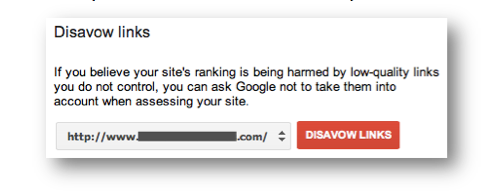
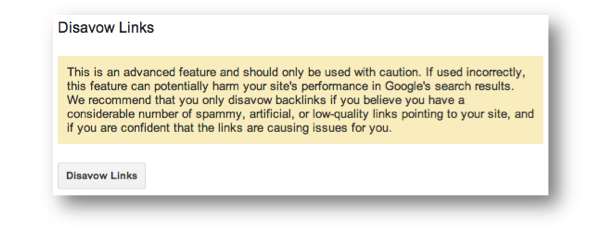
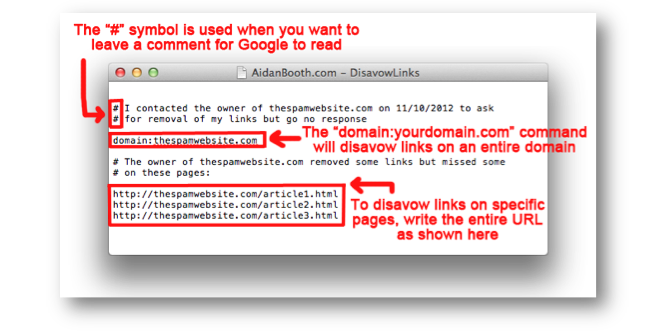
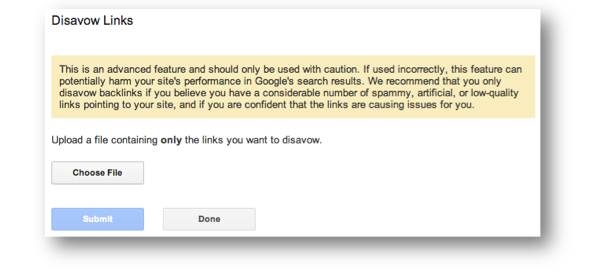





Thanks for the post Aidan. Although the changes Google is making can be a bit frustrating I think it is a great opportunity. At the end of the day they are trying to look after their customers by providing quality so if we provide quality then we should be fine.
Hi John, agreed 🙂
Great post, Aidan. Many thanks for the info. Definitely worth re-reading. Interested in your ‘test’ results.
Thanks Aidan,
As always, some very useful information.
Rob
I think your message is strong enough to realise that “Disavow” is to be avoided in all but the most extreme cases.
“SEO” dead? It will never die and if G decides to move on to bigger and better things there are many waiting in the wings to take advantage.
Thanks for another thought provoking article.
Regards
Russ
Hi Russ, thanks for the comment.
I agree 100% regarding your comments about SEO…as long as there are search engines, as long as people are searching for information, we will always be able to do things to drive traffic to our websites. It may not always be via Google, but we will be able to drive traffic!
Aidan,
You have clearly explainded the Disavow tool.
What is not clear is how to determine which links to my websites that have lot rankings are bad and should be removed?
Just looking at a link in Majectic SEO does not help me determine whether it is bad and needs to be removed.
Larry
Hi Larry,
This big issue is exactly that…we don’t know which links are bad ones…we really have no way of knowing. Sometimes it’s probably obvious (a link on a page stuffed with links etc), but in many cases we simply won’t know which is the main reason I won’t use the disavow tool much (at least until we know more about it)…
Aidan,
This is a very good article with a lot of depth in it and covers a lot about the recent changes in SEO. Thank you for publishing it.
I look forward in seeing what results you find out with your current SEO tactics that you are testing.
Jonathan
Thanks, glad you found this useful!
Actually have a question on the comments section of this blog – your face is available when ever you comment and so is Russ Turner, Danalyn Merino….how can I get a copy of my face to appear?
Thanks
Jon
Hi John,
You need to create a “Gravatar” account (https://en.gravatar.com) – once you’ve done that, when you make a comment (using the same email address as the one used for the Gravatar account), your photo will be displayed.
Aidan,
Excellent article, finally a very clear, straight forward explanation of the disavow tool and how to use it!
Cheers
Will
Hi Will, thanks for commenting, I’m glad this is helpful!
Hey Aiden
Common sense stuff and certainly makes sense. You mentioned about building your own network.
I have also started on this venture on building my own network of Blogs where only I have access to and adding links that point to my site. Second tier link will be coming into those blogs. Slow procedure but after two years of doing ( if i can afford it that long ) I should be a sizable power in my niche. I’m building a few blogs per month and hopefully I’ll see some results soon. It’s costing me a pretty penny but should be worth it
I’m still also using LME for further continued punch to add to. Do you think LME is still up to it with getting results ?
Cheers Aiden
Peter
Hi Peter,
Long term effort and persistence has been a HUGE part of my success online, so I think what you’re doing and the way you’re thinking about this is excellent!
As for LinkingMadeEasy.com, they are still my preferred company to outsource manual link building to…as I understand it, they are updating some of their SEO plans shortly, will be interesting to see what they come up with.
Aidan –
Good work with your article about the Disavow Tool.
I can’t help this. It’s the way I’m wired.
The cynical side of me says that the Disavow Tool is a Google ploy. By offering this tool to all who are licking their (lost website/income) wounds, they are, in effect, putting one arm around you (a comforting gesture), and with the other arm are getting ready to punch you in the nose.
Tipping your hand with Google’s new tool is like New York City announcing amnesty for anyone surrendering an illegal firearm -except Google is not offering amnesty.
It’s like confessing your sins. I don’t like the idea of surrendering my firearm for fear they might turn it on me.
I am one who thinks Google knows too much already. I don’t want to volunteer (by using their tool) to do their job for them. I’d rather they dug up their own dirt on me.
Far fetched? Maybe. We shall see.
I’ll follow you, Aidan, with the new ‘higher quality’ strategy. Who can argue with that?
Hi Dave,
Haha – great analogy about Google…they’ve punched me in the nose a few times over the years! I agree Dave…I think Google do know too much about our sites sometimes…
Dave, I got a real chuckle out of your well said words!!!!
A thorough research on the issue. As always. Thank you Aidan
Authority sites are still on the game. Mine didn’t even blink.
I guess that on the long run we are being helped against those instant millionaire tools and bots that want to get advantage of the web doing nothing. I can only thank Google, though there will be some blood on this arena.
Hi Jose,
I’m glad to hear your authority sites have stood strong – so have mine 🙂 I think Google has good intentions…its just a shame innocent people who;ve worked hard sometimes get caught in the crossfire…
Hi Aidan,
Steve Clayton just a couple of days ago made a webinar where he states instead that from their testing SEO is in fact dead, because the Google rankings are quite random now and there isn’t anymore a clear path that you can follow and get you for sure to the 1st page. I’ve been expecting this since I discovered months ago that Google has patented an algorithm to randomize periodically the first 40 results of the serps.
His point is that you shouldn’t count anymore on getting rankings but you should get traffic from alternative sources like Pinterest, Tumblr, etc. and become independent from Google.
This was in fact my same conclusion, even if you can get to the first page today, with the continuous change of rules by Google what can bring you to the first page today can cause a drop in ranking tomorrow.
Giulio
Hi Giulio,
I’ve spoken to Steve Clayton a lot about this recently and we agree on many many points. Google has done something to randomize results, what they do is make a website drop rankings, then watch to see the webmasters reaction…based on how a webmaster reacts, Google then modifies the ranking (they want to see if webmasters are trying to manipulate Google or not).
I think there’s a LOT of merit to what Steve is thinking right now, but what I’ve found is that when I stick to a plan and don’t deviate from it, I usually get rankings.
I think SEO is changing, but I’m still not convinced that it’s dead as I’ve launched several new websites in the last few months and ALL have climbed to page 1-2 of Google (already). Maybe it’s not as simple as it once was, but I still think it’s doable (perhaps I’ll change my mind in 6 months time…who knows…).
I think getting traffic from other sources is a GREAT idea though…I’m looking into this more and more these days and am actually working with Steve to brainstorm this idea more…YouTube offers massive possibility, as well as plenty of other places.
Thanks a lot for your comment and your thoughts 🙂
Hey Aidan,
Great post. Been having a tough time ranking for money keywords but it is good to know it is happening within 90 days. I am just curious what seo tool that was you have the image that tracks your rankings? Thanks ahead of time.
AK
Hi Anoosh, that screenshot was taken from Market Samurai 🙂
Aidan, as always, great insight…Thank you for making a confusing subject more understandable.
Glad it helped Kelly 🙂
Hi Aidan –
I had a hypothetical when targeting an authority site based on your original search criteria,
Say we were targeting ‘jazz’ which got exact global search volume of 40,000+.
Would it benefit us or hurt our site if we also had another keyword related like ‘jazz fusion’ which total global search volume was say 50,000+, or should we divide the keywords up to make two different sites based on each keyword?
Sorry for re-posting, but I don’t see my comment ever popping up. If it does show, you can delete either one. My other post question was about Squidoo and if there’s an alternative. I noticed my niches is one of the many that Squidoo doesn’t approve for you to build a lens about.
Example: They don’t allow lens’ in the Diet niche.. I heard hubpage is somehwat decent.
Thanks again
Nick
Hi Nick,
If I wanted to target two very similar keywords, such as “jazz” and “jazz fusion”, I’d definitely do it on ONE authority site. It’d take double the work to rank for two keywords (rather than just one), but it’d be easier doing it via one site than two.
With regards to alternatives to Squidoo, the best one is probably HubPages.com. Others include Tumblr.com and Blogger.com (amongst others) 🙂
Hey Aidan –
So just to clarify… EMD aren’t necessarily bad, it’s just expecting them to help you rank on a thin site with no links isn’t going to do it.
Otherwise, we can try branding, but then should our site’s domain have a term that does get search volume, or would it just ultimately depend on backlinking and everything else you described in AH.
Thanks again.
Nick
Hi Nick,
Thats right, EMD’s are not bad at all. They (according to Google) have just lost some of the extra power they once had…in saying that, they still seem to provide a boost in the rankings on the sites I’ve recently used them with!
Hey Aidan! Thanks a bunch for taking the time…
Curious about images… I know in AH you did purchase a few iamges.. I actually find many more effective images related to my niche by doing a google image search rather then off any paid image sites. What would be the pros and cons of using images on our site we find randomly off doing a google search. Would or could we get penalized by google for possibly having ‘duplicate’ content if we happened to use?
Also, I know your AH site, you seem to have quite a few comments after each article, was this outsourced or authentic comments left by reader?
Thanks again for your efforts.
Nick
Hi Nick,
The problem with just taking any image you find in a Google search is that there’s always a chance it’ll be copyright protected…in which case it’d be a crime to put it on your website.
As for the comments, I’m starting to add them over time manually for two reasons:
1. To add more content (adding 2 comments to each page on a 50 page site would give me about 5000 words of new content!)
2. To show more social proof…people like sites that are active, and comments are a great way to show that your community is active 🙂